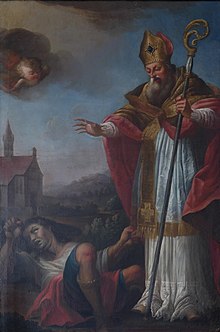Valentine's Day
[2] It originated as a Christian feast day honoring a martyr named Valentine, and through later folk traditions it has also become a significant cultural, religious and commercial celebration of romance and love in many regions of the world.In 18th-century England, it grew into an occasion for couples to express their love for each other by presenting flowers, offering confectionery, and sending greeting cards (known as "valentines").[40] The Roman Emperor Claudius II supposedly forbade this in order to grow his army, believing that married men did not make for good soldiers.[notes 2][23][50][51] Some researchers have theorized that Gelasius I replaced Lupercalia with the celebration of the Purification of the Blessed Virgin Mary and claim a connection to the 14th century's connotations of romantic love, but there is no historical indication that he ever intended such a thing.[53] Alban Butler in his The Lives of the Fathers, Martyrs, and Other Principal Saints (1756–1759) claimed without proof that boys and girls in Lupercalia drew names from a jar to make couples, and that modern Valentine's letters originated from this custom.[31] Honouring the first anniversary of the engagement of fifteen-year-old King Richard II of England to fifteen-year-old Anne of Bohemia,[54] Chaucer wrote (in Middle English): "For this was on seynt Valentynes dayWhan every foul cometh there to chese his makeOf every kynde that men thynke mayAnd that so huge a noyse gan they makeThat erthe, and eyr, and tre, and every lakeSo ful was, that unethe was there spaceFor me to stonde, so ful was al the place.[59] Jack B. Oruch notes that the date on which spring begins has changed since Chaucer's time because of the precession of the equinoxes and the introduction of the more accurate Gregorian calendar only in 1582.[23][60] Three other authors who made poems about birds mating on St. Valentine's Day around the same years: Otton de Grandson from Savoy, John Gower from England, and a knight called Pardo from Valencia.The charter, allegedly issued by Charles VI of France at Mantes-la-Jolie in 1400, describes lavish festivities to be attended by several members of the royal court, including a feast, amorous song and poetry competitions, jousting and dancing."Je suis desja d'amour tanné Ma tres doulce Valentinée..." At the time, the duke was being held in the Tower of London following his capture at the Battle of Agincourt, 1415."John Donne used the legend of the marriage of the birds as the starting point for his epithalamion celebrating the marriage of Elizabeth, daughter of James I of England, and Frederick V, Elector Palatine, on Valentine's Day: "Hayle Bishop Valentine whose day this is All the Ayre is thy Diocese And all the chirping Queristers And other birds ar thy parishioners Thou marryest every yeare The Lyrick Lark, and the graue whispering Doue, The Sparrow that neglects his life for loue, The houshold bird with the redd stomacher Thou makst the Blackbird speede as soone, As doth the Goldfinch, or the Halcyon The Husband Cock lookes out and soone is spedd And meets his wife, which brings her feather-bed."[67]The modern cliché Valentine's Day poem can be found in Gammer Gurton's Garland (1784), a collection of English nursery rhymes published in London by Joseph Johnson: "The rose is red, the violet's blue, The honey's sweet, and so are you.[75] In the United States, the first mass-produced Valentines of embossed paper lace were produced and sold shortly after 1847 by Esther Howland (1828–1904) of Worcester, Massachusetts.[88][89] In 2016, the Catholic Bishops of England and Wales established a novena prayer "to support single people seeking a spouse ahead of St Valentine's Day.[105] In pre-Taliban years, Koch-e-Gul-Faroushi ('Flower Street') in downtown Kabul used to be adorned with innovative flower arrangements, to attract the Valentine's Day-celebrating youth.A new generation of budding poets such as Ramin Mazhar and Mahtab Sahel express themselves through poetry, using Valentine's Day as a theme to voice concerns about the erosion of freedoms.[110] On this day, people in various types of relationship, including lovers, friends, husbands and wives, mothers and children, students and teachers, express their love for each other with flowers, chocolates, cards and other gifts.[117] In ancient India, there was a tradition of adoring Kamadeva, the lord of love – exemplified by the erotic carvings in the Khajuraho Group of Monuments and by the writing of the Kamasutra.[127] It is claimed that as a result of Valentine's Day, the working classes and rural poor become more disconnected socially, politically, and geographically from the hegemonic capitalist power structure.[135] Since 2011, authorities have attempted to discourage celebrations and impose restrictions on the sale and production of Valentine's Day-related goods, although the holiday remains popular as of 2018.In modern Israeli culture Tu B'Av is a popular day to proclaim love, propose marriage, and give gifts like cards or flowers.Unlike western countries, gifts such as greeting cards,[141] candies, flowers, or dinner dates[142] are uncommon, and most of the gifts-related activity is about giving the right amount of chocolate to each person.Activities included conducting raids in hotels to stop young couples from having unlawful sex and distributing leaflets to Muslim university students warning them against the day.[112] In 2018, because of a petition by a citizen, Abdul Waheed, the Pakistan Electronic Media Regulatory Authority advised broadcasters and newspapers against airing any Valentine's Day celebrations.[165] "Saudi cleric Sheikh Muhammad Al-'Arifi said on Valentine's Day Eve that celebrating this holiday constitutes bid'a – a forbidden innovation and deviation from religious law and custom – and mimicry of the West.[168] In 2018, Sheikh Ahmed Qasim Al-Ghamdi, a Saudi cleric and former president of the Committee for the Promotion of Virtue and Prevention of Vice, said that Valentine's Day is not haram and is compatible with Islamic values.As elsewhere, couples exchange gifts, but in some regions, women give a lenço de namorados ("lovers' handkerchief"), which is usually embroidered with love motifs.This has drawn backlash from several groups, institutions,[180] and nationalist organizations like Noua Dreaptă, who condemn Valentine's Day for being superficial, commercialist, and imported Western kitsch.In order to counter the perceived denaturation of national culture, Dragobete, a spring festival celebrated in parts of Southern Romania, has been rekindled after having been ignored during the Communist years as the traditional Romanian holiday for lovers.[192] One of the reasons for Valentine's Day acceptance since the 2000s by the general population is the change in relations between the sexes, and because sexual relationships are no longer strictly limited to be within marriage.
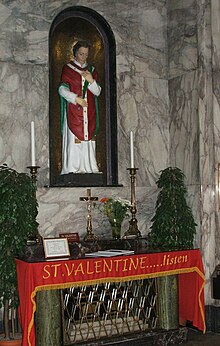

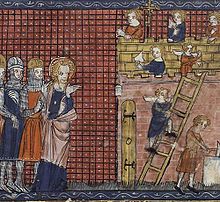

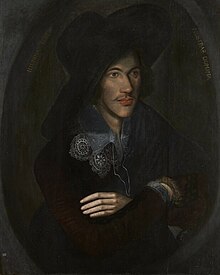



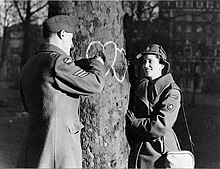




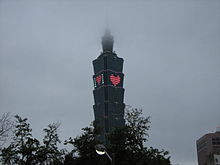


Valentine's Day (disambiguation)St. Valentine's Day (album)St. Valentine's Day (30 Rock)Happy Valentine's Day (disambiguation)Anglican CommunioncalendarLutheran ChurchTraditionalist CatholicismSaint ValentineWestern Christian ChurchEastern Orthodox ChurchAffectionBondingBroken heartCompassionate loveConjugal loveCourtly lovecourtshiptroubadoursFalling in loveFriendshipcross-sexromanticInterpersonal attractionInterpersonal relationshipIntimacyLimerenceLove addictionLove at first sightLove triangleLovesicknessLovestruckPassionPassionate and companionate lovePlatonic lovePuppy loveQueerplatonic relationshipRomanceSelf-loveAmour de soiUnconditional loveUnrequited loveAnarchistFree lovePatriotismYuanfenAmour-proprewords for lovePhilautiaPhiliaPistisStorgḗBhaktiMaitrīJewishChesedCaritasSaudadeMamihlapinatapaiColor wheel theory of loveBhakti yogaBiology of romantic loveLove letterLove of ChristLove of Godin ChristianityLove magicPhilosophyReligious viewslove deitiesMere-exposure effectSacred HeartSimilarityPhysical attractivenessTriangular theory of lovefeast daymartyrValentineValentine of Romepersecuted under the Roman EmpireGelasian SacramentarylovebirdsSaint Valentine's keysepilepsyHieromartyrWhitefriar Street Carmelite ChurchVia FlaminiaChurch and Catacombs of San ValentinoSanta PrassedeNicholas IVSanta Maria in CosmedinInteramnaAurelianNew Minster, WinchesterCatholic EncyclopediamartyrologiesChristian denominationscalendar of saintsthe 1969 revisionRoman Catholic Calendar of SaintsGeneral Roman CalendarRoman MartyrologyChristmastideEastertideBalzanTraditionalist CatholicsSecond Vatican CouncilGeneral Roman Calendar of 1960July 6July 30Jacopo BassanoDiocletianic PersecutionBede's MartyrologyRoman EmperorClaudius IIpaganismhouseholdbaptizedPope Julius IThe Golden LegendexecutedAmerican GreetingsThe History ChannelSaint Valentine of TerniJohn FoxeOrder of Carmelites
